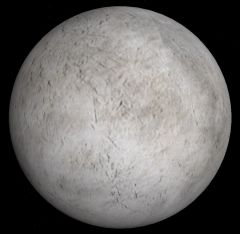Difference between revisions of "136199 Eris"
(Created page.) Tag: Removed redirect |
(Added table line item.) |
||
| (One intermediate revision by the same user not shown) | |||
| Line 60: | Line 60: | ||
|- | |- | ||
!Add-on!!Source!!Version!!Author!!Type!!Release Date!!Compatibility!!Wiki article | !Add-on!!Source!!Version!!Author!!Type!!Release Date!!Compatibility!!Wiki article | ||
| + | |- | ||
| + | |[https://www.orbiter-forum.com/resources/celestial-bodies-motion-part-2-4-v2-0-0.295/ Celestial Bodies Motion - Part 2/4 - v2.0.0]||O-F Resources||v2.0.0||cristiapi||Scenery||2 July 2015||*module only|| | ||
|- | |- | ||
|[https://www.orbiter-forum.com/resources/eris-and-dysnomia.521/ Eris and Dysnomia]||O-F Resources||2008-05-10||Piper||Scenery||11 May 2008|||| | |[https://www.orbiter-forum.com/resources/eris-and-dysnomia.521/ Eris and Dysnomia]||O-F Resources||2008-05-10||Piper||Scenery||11 May 2008|||| | ||
Latest revision as of 13:14, 10 November 2024
136199 Eris (2003 UB313) is the second largest after 134340 Pluto and the most massive Dwarf planet in the solar system, and is a trans-Neptunian object in the scattered disc. Eris was discovered by Mike Brown at the Palomar Observatory in January 2005. There is a pre-discovery image from October 2003, but, it was not recognized due to its slow orbital motion.
Eris is named for Eris the Greek goddess of strife and discord.
Eris has one satellite, Dysnomia.
Eris in Orbiter[edit]
Eris was first introduced with the release of ErisAndDysnomia.zip in May 2008.
| Add-on | Source | Version | Author | Type | Release Date | Compatibility | Wiki article |
|---|---|---|---|---|---|---|---|
| Celestial Bodies Motion - Part 2/4 - v2.0.0 | O-F Resources | v2.0.0 | cristiapi | Scenery | 2 July 2015 | *module only | |
| Eris and Dysnomia | O-F Resources | 2008-05-10 | Piper | Scenery | 11 May 2008 | ||
Gallery[edit]
Image of Eris and Dysnomia by Hubble in August 2006
from Wikimedia Commons
References[edit]
| edit The Solar System | |
|---|---|
| Central star |
Sun (Sol) |
| Planets |
Mercury - Venus - Earth - Mars - Jupiter - Saturn - Uranus - Neptune |
| Natural satellites |
Moon - Phobos - Deimos - Io - Europa - Ganymede - Titan - more... |
| Add-ons |
Planets - Dwarf Planets - Small objects - Natural satellites - Alternative star systems |


